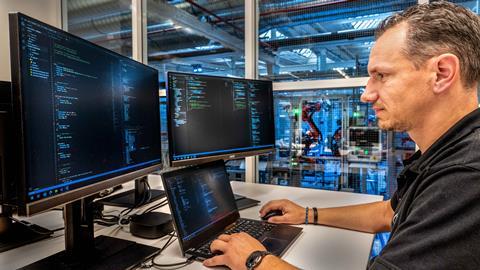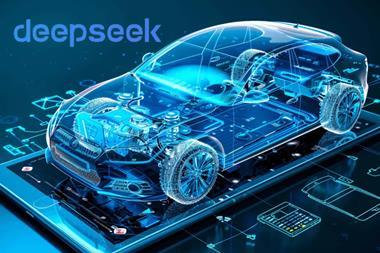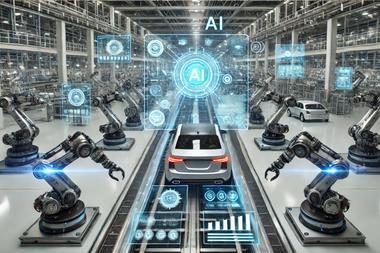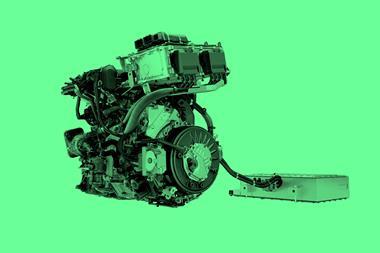The process of digitalising manufacturing operations continues to change rapidly with new software and hardware developments and the growing application of artificial intelligence, but challenges remain in optimising these opportunities.
Manufacturing operations have been undergoing rapid transformation in recent years, fuelled by the digital revolution and evolving technologies. David Schultz, an industry expert and Director for the SMIIoT Division of the International Society of Automation (ISA) sat down for an interview to share his thoughts on the future of smart manufacturing, the increasing role of data, and the emerging trends such as artificial intelligence (AI) and digital twins.
Connecting intelligence to technology
The term ’smart factory’ has been used widely for years, but according to Schultz, the meaning of smart manufacturing has evolved significantly. He stresses that smart manufacturing today revolves around the concept of data ops – a combination of data operations that allow manufacturers to connect intelligence to technology seamlessly.
Schultz explains, “When companies create or produce new intelligence, they want to connect that into an ecosystem. They no longer want to capture information manually but to have it integrated seamlessly with the rest of the system.” This is especially relevant as companies strive to become data-driven manufacturers, ensuring that data collected on the manufacturing floor and at the enterprise level can be leveraged effectively to make decisions.
Schultz points to three core elements for successful smart manufacturing:
- Seamless integration of data within the manufacturing ecosystem
- Data that can be formatted to be easily shared across different systems
- Data contextualisation and normalization for improved decision-making
“Large projects tend to be poorly defined and often go over budget. Instead, start with small, simple use cases that can deliver quick wins” – David Schultz, ISA
The importance of small, scalable digital projects
When it comes to digital transformation, many manufacturers make the mistake of focusing on large, complex projects that often run over time and budget. Schultz advocates for a different approach; starting small and scaling gradually.
“Large projects tend to be poorly defined and often go over budget. Instead, start with small, simple use cases that can deliver quick wins,” says Schultz. By focusing on incremental changes, manufacturers can avoid the common pitfalls of complex, unwieldy projects.
This agile development approach, traditionally used in software development, can be equally effective on the manufacturing floor. Schultz believes that solving smaller, manageable problems creates valuable intelligence, allowing manufacturers to make necessary adjustments as they scale up.
Understanding the power of data
One of the key takeaways from Schultz’s discussion is the idea that data is the new oil. The wealth of data generated by modern manufacturing processes is a goldmine waiting to be tapped, but only if companies learn how to harness it correctly.
“When you generate data, it should lead to actionable insights,” Schultz emphasises. He notes that many companies still struggle with understanding how to make the most of their data. For example, while many manufacturers implement dashboards to track key performance indicators (KPIs), they often don’t know what to do with the information. Schultz highlights the need for data to be tied directly to measurable business objectives.
Schultz says companies need to ask themselves fundamental questions such as:
- What specific outcomes do we want from this data?
- What are our KPIs, and how do they align with our broader business strategy?
- How can we leverage data to make better, faster decisions on the factory floor?
“Companies are still using paper-based reporting and manual data entry, yet they’re talking about implementing AI” – David Schultz
How to approach the application of AI and machine learning in manufacturing
Artificial intelligence and machine learning have long been hailed as game-changers for industries worldwide, and manufacturing is no exception. However, Schultz warns that many companies are getting distracted by the allure of AI before they’re ready to truly benefit from it.
“Companies are still using paper-based reporting and manual data entry, yet they’re talking about implementing AI,” Schultz points out. He advises manufacturers to focus on building a robust data architecture first before diving into AI solutions.
Schultz differentiates between machine learning and artificial intelligence in manufacturing. Machine learning focuses on identifying patterns in data, while AI seeks to broaden these patterns by making models more human-like. He sees the potential for AI to optimise manufacturing processes, but only once a strong foundation of integrated and contextualized data is in place.
In particular, AI can play a significant role in predictive maintenance and production health, identifying patterns that signal potential issues before they arise. Schultz cites the example of asset health monitoring: “By analysing operational data, AI can predict when equipment will fail, allowing manufacturers to take preventative action months in advance.”
Scaling digital twin deployments
Digital twin technology has gained traction in recent years, allowing manufacturers to create virtual models of physical assets to optimise production and predict maintenance needs. While digital twins are often associated with large-scale operations, Schultz sees a growing trend toward smaller, more localised deployments.
“We’re starting to see digital twins used on smaller scales, even down to individual production lines or stations,” Schultz explains. This democratisation of digital twin technology makes it more accessible and practical for companies of all sizes, enabling them to optimise their processes without needing massive infrastructure changes.
Schultz also highlights the importance of edge computing in this context. By processing data closer to where it is generated, manufacturers can deploy lightweight models that improve efficiency and decision-making on the factory floor. Schultz explains:
“As we’ve become better at analysing data, we can build some very lightweight models that we can run at the edge. This is a trend you’re going to see in smart manufacturing, what I refer to as machine learning at the edge or analytics on the edge.
“Using this small device, you can capture contextualized information, which is periodically processed. A good example of this are wireless vibration monitors for asset health. Every 15 minutes it wakes up, runs an analysis and then shuts off. For all intents and purposes, that is a digital twin running at the edge, and you’re going to see that becoming more popular.”

David Schultz has over 25 years of automation and process control experience across many market verticals, with a focus on continuous and batch processing. He is the Director for the SMIIoT Division of the International Society of Automation (ISA) and serves on several technical committees.
Including the human element in the digital transformation
Despite the excitement around digital tools and smart technologies, Schultz believes that the human element remains critical. “You need buy-in from the workforce,” he stresses. The success of digital transformation depends not only on the technology but also on the people who use it.
Schultz recalls a case where a US manufacturer was implementing digital twin technology to support electric vehicle (EV) production. The key to success wasn’t just the technology itself but ensuring that the workforce understood and embraced the new tools. “The democratisation of these technologies means that everyone, from operators to management, needs to understand how to use them effectively.”
Overcoming Silos: Integration is Key
Another challenge many manufacturers face is the existence of siloed systems, where different departments or units use technologies that don’t communicate effectively with each other. This is especially common between operations and maintenance teams, leading to inefficiencies and friction.
Schultz emphasises the need for system integration and collaborative data sharing. “Operations may have its own AI tools, and maintenance might have another set. But if these systems don’t talk to each other, you’re missing out on valuable insights,” he warns. Integration, according to Schultz, is crucial to achieving a truly connected smart factory.
“You want solutions that can do one thing really well, and then integrate them with other tools to create a cohesive system” – David Schultz
Avoiding overcomplication
One of the biggest mistakes companies make, Schultz says, is overcomplicating their digital solutions. He cites Occam’s razor – the principle that the simplest solution is often the best –as a guiding philosophy for manufacturers looking to implement new technologies.
Instead of trying to create a one-size-fits-all solution, Schultz advises focusing on individual tools that excel at specific tasks. “You want solutions that can do one thing really well, and then integrate them with other tools to create a cohesive system.”
Connecting data sources and streamlining analysis
Looking ahead, Schultz sees data ops as the future of smart manufacturing. As companies continue to generate more data, the ability to connect, contextualise, and normalise that data will become essential for optimising production.
According to Schultz, the next big step in the evolution of smart factories will involve pipelines – mechanisms that allow manufacturers to connect data sources, streamline analysis, and optimise the use of data in real-time







































No comments yet